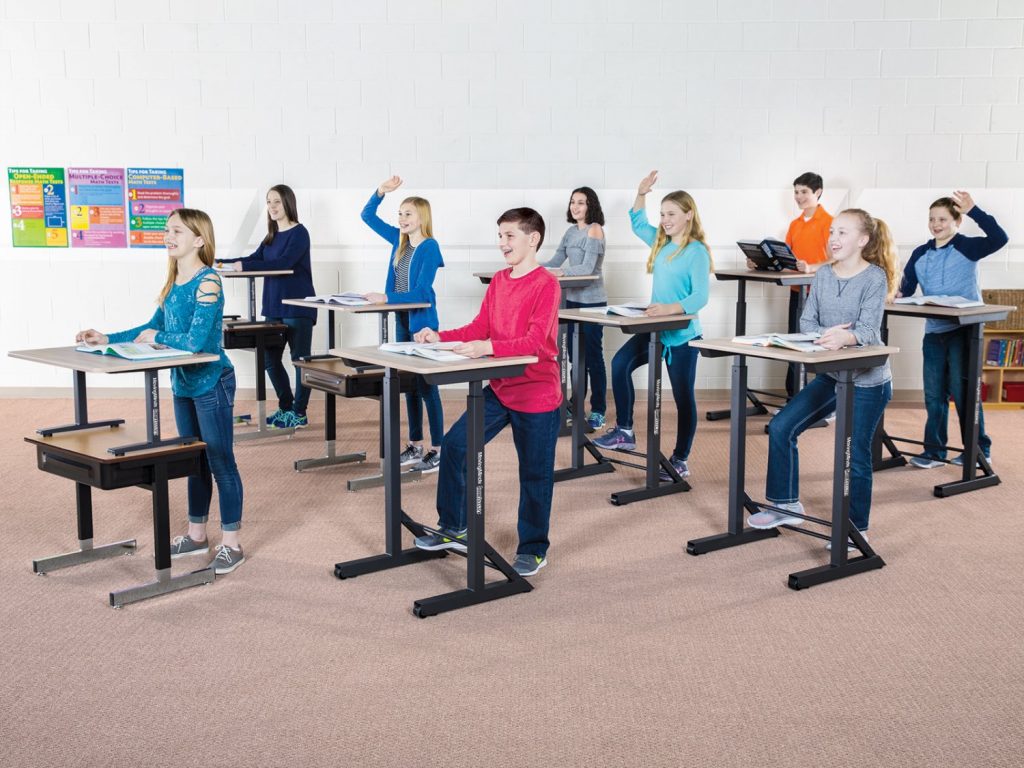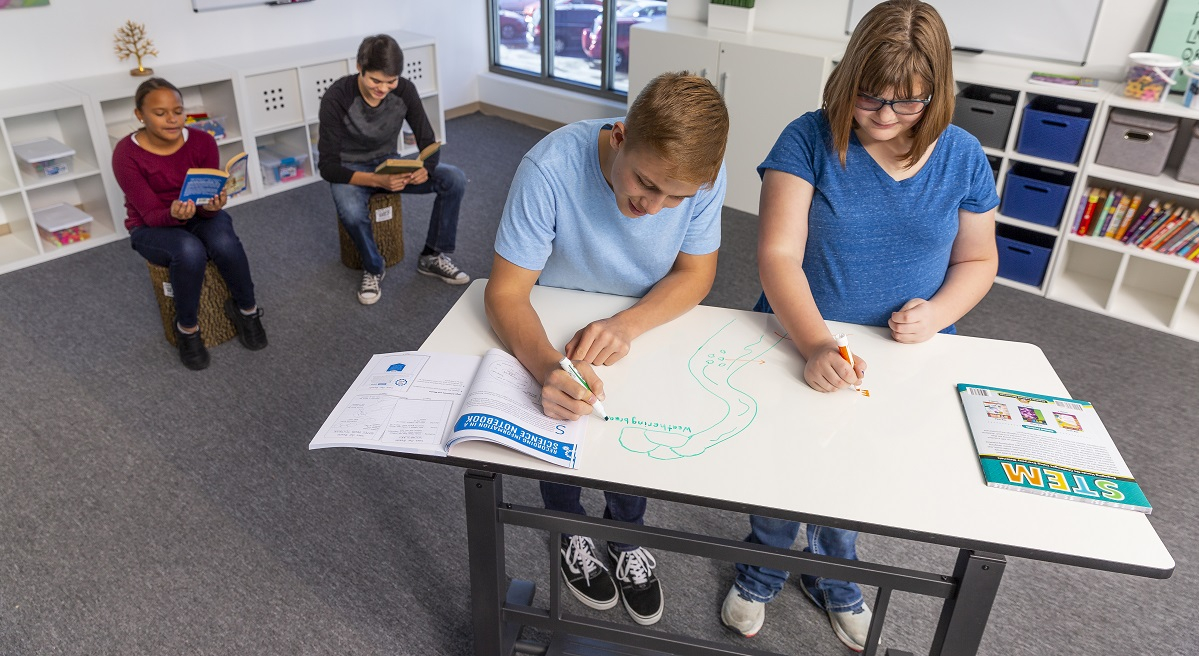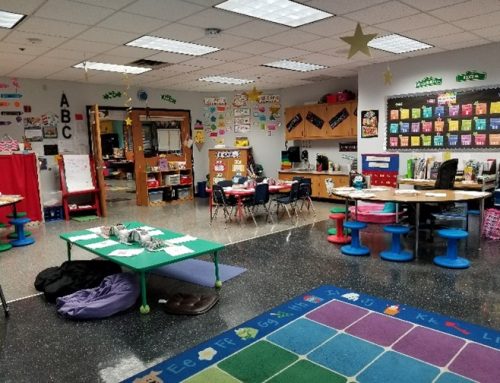Look around your classroom at the types of desks your students sit in. Are they too big or too small? Are they confining? Do they clutter the space? Are they one size fits all? While you probably just take what you’ve been given when it comes to your classroom furniture, perhaps thinking outside the box may help with student learning and student posture. While there isn’t a lot of research on the topic, I’ve included a bit of interesting information below.
Active Seating Decreases Discomfort

According to a study looking at 2nd grade student posture and comfort in school, children using standing work stations reported less discomfort compared to those using traditional seating options. A larger percentage of the students using the standing desks spent more time in preferred postures and less time in non-preferred postures. The standing desks provided increased caloric expenditure, which contributes to better health.
Another study looking at differences in the sitting habits of 8-year-old students in an active classroom versus traditional classroom found that those with the active classroom used dynamic seating 53% of time, stood 31% of time, and walked around 10% of time compared to 97% sitting in the traditional environment. Additionally, less neck and trunk rotation was required for those in the active seating environment. Again, the active seating provided more physical activity, contributing to better health.
In terms of student posture and learning, researchers rated students’ states of boredom (which equated to low engagement) and flow (which equated to high engagement) based on their posture. Flow was manifested through more pressure on the seat of a pressure sensitive chair while boredom was associated with more pressure exerted on the back of the chair along with quick changes in pressure on the seat (e.g., restlessness). In essence, posture predicts engagement in learning.
So, why wouldn’t we want to encourage posture in our classes that is linked to more engagement in learning? And why wouldn’t we want our students to improve their health while learning? Let’s do it. Give active seating a try.
References
Benden, M., Pickens, A., Shipp, E., Perry, J., & Schneider, D. (2013). Evaluating a school based childhood obesity intervention for posture and comfort. Health, 5(08), 54.
Cardon, G., De Clercq, D., De Bourdeaudhuij, I., & Breithecker, D. (2004). Sitting habits in elementary schoolchildren: a traditional versus a “Moving school”. Patient Education and Counseling, 54(2), 133-142.
D’Mello, S. S., Chipman, P., & Graesser, A. (2007). Posture as a predictor of learner’s affective engagement. In Proceedings of the Annual Meeting of the Cognitive Science Society (Vol. 29, No. 29).
Heather is a Professor in the Department of Kinesiology and Health Promotion at the University of Kentucky. She is a former physical education teacher, and co-author of Dynamic Physical Education for Secondary School Children, 8ed. Heather was also the recipient of the NASPE Curriculum and Instruction Young Scholar Award and a AAHPERD Research Consortium Fellow.







Leave A Comment